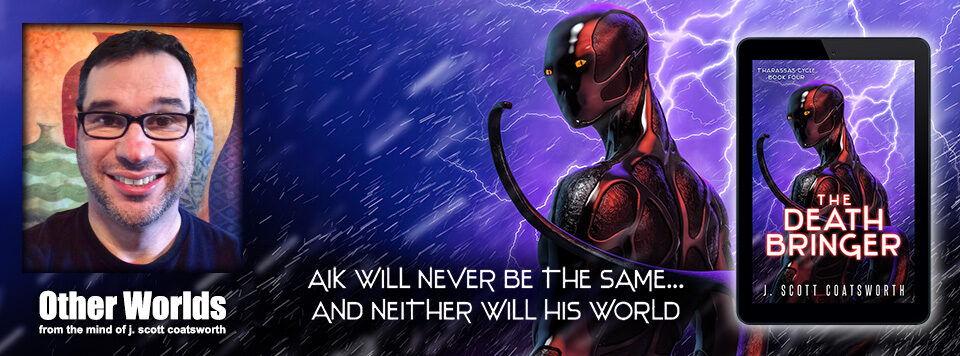Hey all,
As I continue to write, I like to find new ways to challenge myself as a writer. Yeah, I’m a glutton for punishment. 😛
Often this means working on my writing skills themselves. I love to watch really good films and TV shows and dissect how they put their stories together, and then apply that to my own work. It’s a great source of writing lessons and helps me keep advancing my skills.
Sometimes it manifests in my characters themselves. In the last couple years, I have written a number of characters very different from myself that I’d never tried before – transgender, lesbian, even one with OCD. Each one presented unique challenges.
In my latest book, “The Shoreless Sea,” I am tackling two new kinds of characters – one who is deaf and another who is enby (NB = non binary).
It’s a lot to bite off all at once, but the enby character, especially, is one I’ve wanted to write for some time.
They are both challenging to me as a cis gay man, but in very different ways.
Writing a profoundly deaf character (born deaf) means constantly remembering that they can’t hear and therefore can’t respond to any of the aural cues I would normally use in a story:
“There was a loud crash behind him. Robert spun around to confront the monster.”
But it also creates opportunities in the storytelling – what happens when the loud crash doesn’t alert the character? How might he/she/they have learned to compensate for this missing sense? What kind of distance (or closeness) does it create with the other characters?
One of the biggest challenges for me with this character is communication. In the story, several characters use a version of ASL, but it’s not widely known, so at times the character has to rely on lip reading, which is much less accurate than TV would have you believe.
But again, the mode of communication becomes an opportunity, a way for other characters to show that they either care for or disregard the character – by learning to communicate on his terms or by snubbing him and speaking without looking at him.
I’ve been helped immeasurably by a couple beta readers who are deaf, and who are helping me get the character right. One pointed out, for instance, that while his spoken words are likely to sound a little “off” to others, when we’re in his head, they should sound right. He can’t perceive how others hear his words. Well, he can sometimes, but that’s another part of the story. Spoiler alert!
He also suggested that I use regular quotes instead of italics to express sign language, because long stretches in italics become tiring for the reader and emphasize difference. So I have, but I’ve also found opportunities to subtly reenforce the sign aspect:
His hands moved angrily.
It’s immensely rewarding to write an entirely new kind of character, especially if you get it right, but it takes work.
As for my enby character, they don’t appear until the second part of the book, which I am just starting this week. I have some ideas about them, but I’ll come back to y’all to report more when I get farther into the story.
To my writer friends – what characters have you written that stretched you as a writer? What did you learn? And how did you get them right?

